Lee Ming-wei (李明維)
The Shrine Project (壇城計畫)
Lee Mingwei (李明維) is a friendly kind of guy. He's the boy next door with a great smile. If you happen to run into him, he might ask how you're doing and talk about anything in life except art. But, if you take a look at his resume, you'll realize he is one of Taiwan's most promising young artists. Pursuing his own creative vision, he has ranged far and wide, venturing way beyond the scope, form and medium of what most other local artists have covered. Now 36, he holds a Master of Fine Arts from Yale in New Genre Public Art, and in 1998 he became the first ever artist from Taiwan to hold a solo exhibition at New York City's Whitney Museum.
Born and raised in Taipei, Lee went to college in San Francisco where he earned an undergraduate degree in architecture. He now uses that training extensively in his projects, combing it with his explorations into the sacred and profane. The content in his works is extensive, including everything from the culinary arts to Ch'an Buddhism.
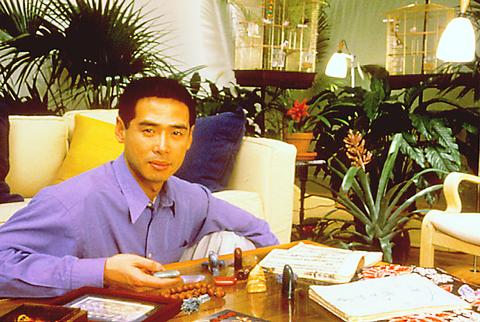
PHOTO: COURTESY OF LEE MING-WEI
A promoter of conceptually oriented interactive art, Lee simply claims that art is about people and life itself. In his "Letter Writing Project" of 1998, visitors were invited to write letters about gratitude, insight, or forgiveness. In a second piece, "Way Stations," he invited strangers to dine with him. Both works centered around the theme of interaction with people, probing into their sentiments, feelings and thoughts.
For the Biennial, Lee is orchestrating the "Shrine Project." It will include the participation of 147 people who will assist him in building seven shrines. Initially, seven of the participants will be responsible for creating their own individual shrines by amassing objects of personal significance and placing them in the shrines. Each week different people will be invited to do the same thing. Shrines, a common phenomenon in Asia, are used in religion to demarcate sacred territory. However, Lee said that for those who are not religious, there is still always something sacred. The objects that participants bring to the shrine installation are a way for them to "externalize" such sacredness.
Lee's definition of "the sacred" is both spiritually and emotionally derived, referring to things or people that are valued or considered holy. The shrines Lee has installed offer a space for such specially cherished objects, elevating them "to the level of a public, albeit temporary, shrine." The work invites viewers to observe their own private reactions to what others have chosen as sacred.
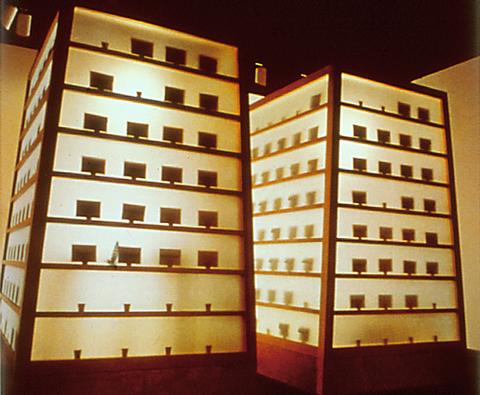
PHOTO: COURTESY OF LEE MING-WEI
Hung Tung-lu (洪東祿)
E-Lost in Speed (E-失速)
Hung, 32, is a local product who went international with last year's Venice Biennial. But he is not to be accessed by regular channels. He doesn't like to be covered by the media, he doesn't like to name his works, and he doesn't like to talk about the conceptual framework behind his art. In private, however, he is funny and relaxing. Some have even compared him to the film comedian Chou Hsing-chih (
Even though he has two degrees in art, Hung refuses to use clinical terms in the discussion of his art. "What's important is that we are having fun," he said, a bit tired of those who badger him for reasons and meanings. As an artist, he has gained popularity for his light boxes, which show collages using childhood toys and dolls against background designs from churches and classical Chinese architecture.
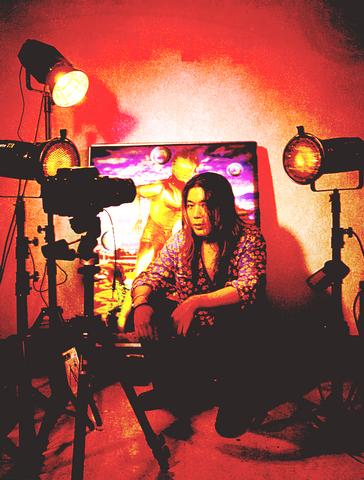
PHOTO: HO CHING-TAI
For the Biennial, Hung has fashioned five flashy acrylic panels of 120 x 180 cm. Each of them reveals different images ? between four and twelve per panel ? as it is viewed from different angles. Hung says that these transient images were inspired by driving during his student days when he used to commute between Taipei and Tainan. But even more than that, he uses them to show how the e-generation, which lives in a cyberspace composed of the Internet and virtual reality, is obsessed with the electronic digital world. For him, this world is one of transience. It is a place where reality can be repeated and characters can be frozen and one can easily get lost.
"The e-generation swim and flow from the e-mail of information super highway through electronic music to ecstasy," said Hung, speaking in his quirky English, which runs the thin line between nonsense and poetry. "We are swimming in the digital river made of speedy flashes, which is what high technology has dedicated to human beings, like infatuation drugs."
A devotee of computer games and electronic music, Hung believes that sometimes people reduce themselves to mere characters by indulging repeatedly in virtual reality, or else in going there, they become the dominators of their own games. But he also says that it's an illusion to think that we have become the centers of our own virtual realities. According to him, that is why people get lost inside electronically generated realms.
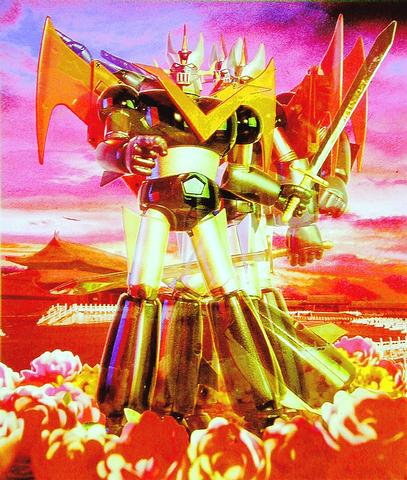
PHOTO: COURTESY OF TFAM
Wang Jun-jieh (王俊傑)
Microbiology Association: Clothing Project 微生物協會:衣計畫
Wang Jun-jieh spent the 1980s working as a cultural critic and a theatrical art director. Since then, he has gained an international reputation as an artist through his creation of sophisticated projects of outrageous scale. His works, which incorporate a great diversity of media, seem as if they can only stem from his wildest imaginations. One is even tempted to believe his next project will be something on the scope of Star Wars. Unbelievable and technologically oriented, his projects generally include massive structures inside exhibition spaces in combination with multimedia installations.
For Wang's Biennial piece, he is turning the gallery into a virtual museum that covers three exhibition rooms on one floor of the museum. Visitors will see a variety of paraphernalia on the site, ranging from the banal to the technological and including clothing, computers, film, documents, and magazines. In content, all of these objects center around a fabulous, virtual base he calls the Microbiology Association. Through the piece, Wang leads you into its world.
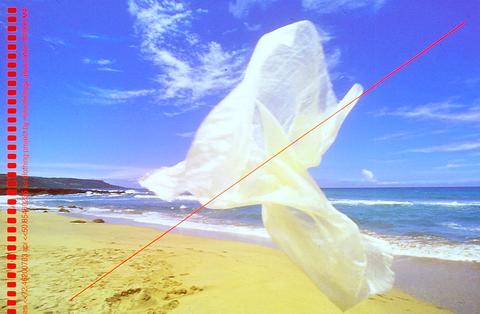
PHOTO: COURTESY OF WANG JUN-JIEH
A DVD player gives you a tour of the labs inside the headquarters of the Association; an interactive fashion show is offered online by the association; and an architectural model of the Association's headquarters gives visitors a tangible experience of this magical place.
Wang has created the Microbiology Association to present his virtual reality, which he uses to probe into all kinds of issues and topics, particularly his hypothesis that the social environment in which humans live in will go through certain kinds of mutations after the year 2000.
In the piece, Wang further uses clothing as a medium to investigate what lives will be like in what he sees as a coming world of detachment. Why clothing? As Wang explained, in the digital world, clothing has obtained meaning as a new type of "interface" that goes beyond the traditional functions of warmth and ornamentation. In addition, he believes that humans have become the individual information centers of the digital world. Thus the work is meant to convey that individuals, in conjunction with the clothes they wear, are evolving into "modules" that are both self-contained and detached.
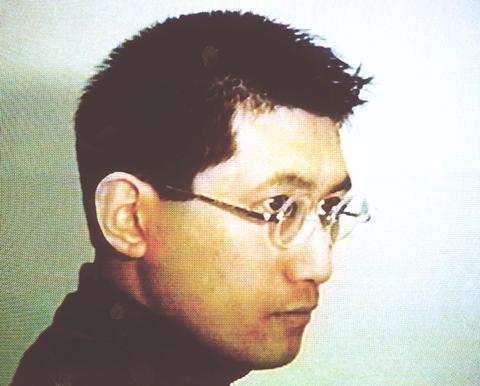
PHOTO: COURTESY OF WANG JUN-JIEH
Born in Taipei, Wang has studied in Taipei and Berlin. He began creating projects based on virtual commodities in 1994 and has summed up much of this opus in last year's Fukuoka Asian Art Triennale. For the exhibition, Wang created a virtual company called FOCL (For Our Consumer Loving) and came up with five virtual products ranging from handguns to an elixir for prolonging life. Wang uses such virtual commercial mechanism to reveal the distance between reality and imagined worlds. His current project, the Microbiology Association, goes a farther step and is more expansive than its predecessors in the products it has to offer. Yet its theme still centers around people and their environment, asking the same question: how will people survive in the new world of the 21st century?
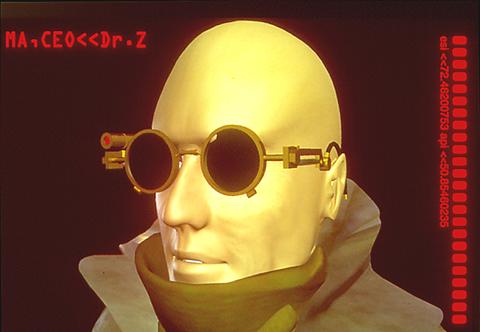
PHOTO: COURTESY OF WANG JUN-JIEH

Taiwan Power Co (Taipower, 台電) and the New Taipei City Government in May last year agreed to allow the activation of a spent fuel storage facility for the Jinshan Nuclear Power Plant in Shihmen District (石門). The deal ended eleven years of legal wrangling. According to the Taipower announcement, the city government engaged in repeated delays, failing to approve water and soil conservation plans. Taipower said at the time that plans for another dry storage facility for the Guosheng Nuclear Power Plant in New Taipei City’s Wanli District (萬里) remained stuck in legal limbo. Later that year an agreement was reached
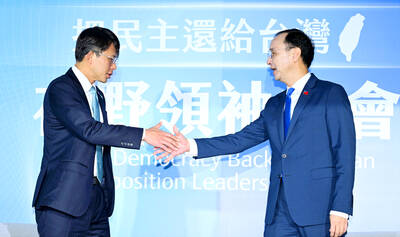
What does the Taiwan People’s Party (TPP) in the Huang Kuo-chang (黃國昌) era stand for? What sets it apart from their allies, the Chinese Nationalist Party (KMT)? With some shifts in tone and emphasis, the KMT’s stances have not changed significantly since the late 2000s and the era of former president Ma Ying-jeou (馬英九). The Democratic Progressive Party’s (DPP) current platform formed in the mid-2010s under the guidance of Tsai Ing-wen (蔡英文), and current President William Lai (賴清德) campaigned on continuity. Though their ideological stances may be a bit stale, they have the advantage of being broadly understood by the voters.
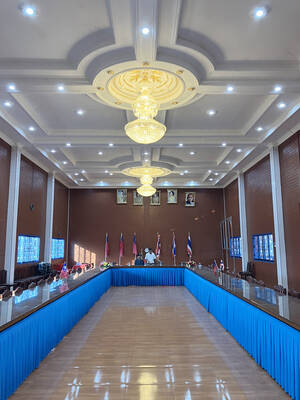
In a high-rise office building in Taipei’s government district, the primary agency for maintaining links to Thailand’s 108 Yunnan villages — which are home to a population of around 200,000 descendants of the Chinese Nationalist Party (KMT) armies stranded in Thailand following the Chinese Civil War — is the Overseas Community Affairs Council (OCAC). Established in China in 1926, the OCAC was born of a mandate to support Chinese education, culture and economic development in far flung Chinese diaspora communities, which, especially in southeast Asia, had underwritten the military insurgencies against the Qing Dynasty that led to the founding of
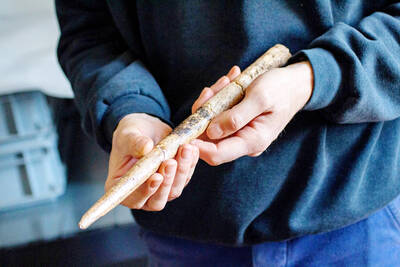
Artifacts found at archeological sites in France and Spain along the Bay of Biscay shoreline show that humans have been crafting tools from whale bones since more than 20,000 years ago, illustrating anew the resourcefulness of prehistoric people. The tools, primarily hunting implements such as projectile points, were fashioned from the bones of at least five species of large whales, the researchers said. Bones from sperm whales were the most abundant, followed by fin whales, gray whales, right or bowhead whales — two species indistinguishable with the analytical method used in the study — and blue whales. With seafaring capabilities by humans